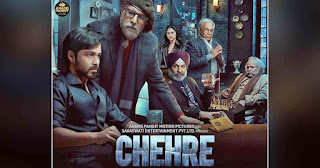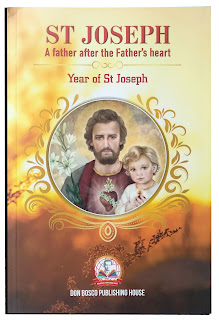One Indian Girl (Book Review)
Chetan Bhagat, One Indian Girl, New Delhi: Rupa Publications 2016, pp. 272, Rs. 176.
Chetan Bhagat has made a name for himself on the Indian literary scene with his novels. Some of them have even succeeded in feeding famished Bollywood with adventures that provided a refreshing change from mainstream storylines. Bollywood's chronic 'borrow and steal' policy has ensured that Chetan becomes a household name in India. Despite the poor literacy of our country, Chetan's books have become bestsellers read by millions.
 While all this is nice and heart-warming, it sadly but naturally leads to the point where whatever Chetan writes sells immaterial of quality. It is my opinion that One Indian Girl suffers from this exact bias. I am a fan of Chetan Bhagat. His initial novels were thrilling, fresh and interesting. But once fame caught up, I detected a downward slip in quality and content. His last couple of novels have been rather poor. Revolution 2020 marked the beginning of this downward spiral. Half Girlfriend was tolerable and One Indian Girl really tests the limits of one's endurance. But enough about the author. Let us get down to reviewing the book!
While all this is nice and heart-warming, it sadly but naturally leads to the point where whatever Chetan writes sells immaterial of quality. It is my opinion that One Indian Girl suffers from this exact bias. I am a fan of Chetan Bhagat. His initial novels were thrilling, fresh and interesting. But once fame caught up, I detected a downward slip in quality and content. His last couple of novels have been rather poor. Revolution 2020 marked the beginning of this downward spiral. Half Girlfriend was tolerable and One Indian Girl really tests the limits of one's endurance. But enough about the author. Let us get down to reviewing the book!
One Indian Girl promises an entertaining read from a fresh and hardly taken perspective. The protagonist is Radhika Mehta, a prodigious banker with feminist leanings on the verge of India's most overrated event - marriage! Now, marriage is looked at differently by men and women. Over and above this primary difference of opinion we have the superimposed Indian opinion of marriage which Indian parents particularly mothers thrust upon their children. All this is much worse when you are a girl. I know it from experience and so does Radhika, who tries various things to put off this whole charade till the last possible minute.
Chetan claims he interviewed over 100 women as background research for this book (p. vii). While the content could prove scandalous to some, it does reflect a true, even if pretty exaggerated picture of a young woman. However, he does well to capture the family dynamics and pressures that a single Indian woman faces.
There are a few things that did not sit down well with me. Firstly, the book starts out very well but very soon turns into a predictable story with enough masala to pander to base popular tastes. Thus, in my opinion the book is at least 100 pages too long. Secondly, the ending is a little too predictable. It seems that he is almost begging for a movie to be made on the book and from what I have read Kangana Ranaut has already opted to play the lead role. Thirdly, twists are added just for the heck of it. The book seems to be more of a travelogue and less of a novel. Honestly, I enjoyed mentally taking a trip around some fancy destinations around the world but cursed the drudgery of reading page after page of pandering literature. Lastly, Chetan plays into the stereotype of Goa as a good destination for fun and frolic. Being a Goan, I find that quite offensive. But considering that what he writes about does happen though not so openly, I grant it under literary freedom.
On the whole, the book is a bore. It promises a lot more than it delivers. However, it does have its high points even though they are few and far apart. I feel sad that Chetan panders to audiences much like Bollywood rather than offering something original. This story had great potential to shake up the Indian mindset and awaken sensibilities but sadly, it chose the popular path and glossed over very rich themes.
Chetan Bhagat has made a name for himself on the Indian literary scene with his novels. Some of them have even succeeded in feeding famished Bollywood with adventures that provided a refreshing change from mainstream storylines. Bollywood's chronic 'borrow and steal' policy has ensured that Chetan becomes a household name in India. Despite the poor literacy of our country, Chetan's books have become bestsellers read by millions.
 While all this is nice and heart-warming, it sadly but naturally leads to the point where whatever Chetan writes sells immaterial of quality. It is my opinion that One Indian Girl suffers from this exact bias. I am a fan of Chetan Bhagat. His initial novels were thrilling, fresh and interesting. But once fame caught up, I detected a downward slip in quality and content. His last couple of novels have been rather poor. Revolution 2020 marked the beginning of this downward spiral. Half Girlfriend was tolerable and One Indian Girl really tests the limits of one's endurance. But enough about the author. Let us get down to reviewing the book!
While all this is nice and heart-warming, it sadly but naturally leads to the point where whatever Chetan writes sells immaterial of quality. It is my opinion that One Indian Girl suffers from this exact bias. I am a fan of Chetan Bhagat. His initial novels were thrilling, fresh and interesting. But once fame caught up, I detected a downward slip in quality and content. His last couple of novels have been rather poor. Revolution 2020 marked the beginning of this downward spiral. Half Girlfriend was tolerable and One Indian Girl really tests the limits of one's endurance. But enough about the author. Let us get down to reviewing the book!One Indian Girl promises an entertaining read from a fresh and hardly taken perspective. The protagonist is Radhika Mehta, a prodigious banker with feminist leanings on the verge of India's most overrated event - marriage! Now, marriage is looked at differently by men and women. Over and above this primary difference of opinion we have the superimposed Indian opinion of marriage which Indian parents particularly mothers thrust upon their children. All this is much worse when you are a girl. I know it from experience and so does Radhika, who tries various things to put off this whole charade till the last possible minute.
Chetan claims he interviewed over 100 women as background research for this book (p. vii). While the content could prove scandalous to some, it does reflect a true, even if pretty exaggerated picture of a young woman. However, he does well to capture the family dynamics and pressures that a single Indian woman faces.
There are a few things that did not sit down well with me. Firstly, the book starts out very well but very soon turns into a predictable story with enough masala to pander to base popular tastes. Thus, in my opinion the book is at least 100 pages too long. Secondly, the ending is a little too predictable. It seems that he is almost begging for a movie to be made on the book and from what I have read Kangana Ranaut has already opted to play the lead role. Thirdly, twists are added just for the heck of it. The book seems to be more of a travelogue and less of a novel. Honestly, I enjoyed mentally taking a trip around some fancy destinations around the world but cursed the drudgery of reading page after page of pandering literature. Lastly, Chetan plays into the stereotype of Goa as a good destination for fun and frolic. Being a Goan, I find that quite offensive. But considering that what he writes about does happen though not so openly, I grant it under literary freedom.
On the whole, the book is a bore. It promises a lot more than it delivers. However, it does have its high points even though they are few and far apart. I feel sad that Chetan panders to audiences much like Bollywood rather than offering something original. This story had great potential to shake up the Indian mindset and awaken sensibilities but sadly, it chose the popular path and glossed over very rich themes.



Comments
Post a Comment